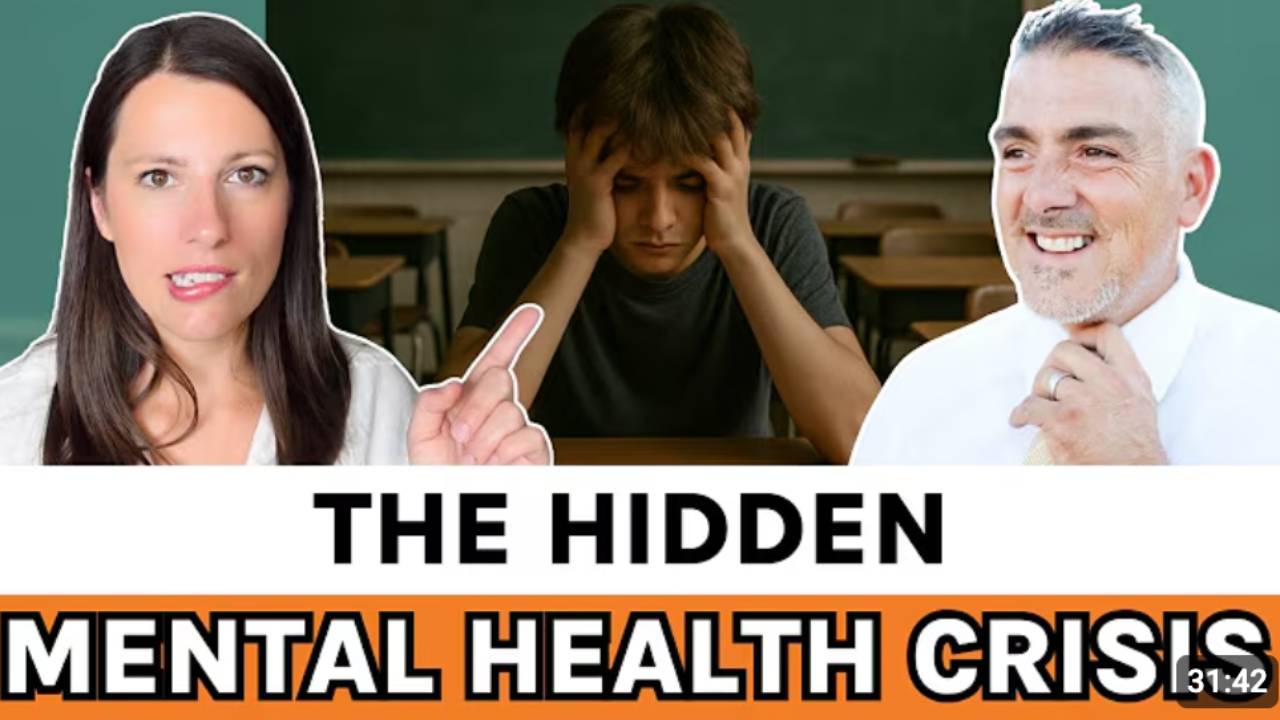Student Mental Health Is Getting Worse. What Can Teachers Actually Do?
Oct 15, 2025
1 in 5 young people in the UK are now experiencing a probable mental health condition.
88% of teachers say they’ve seen a rise in student mental health challenges.
And more than half of us don’t feel confident supporting those students when they need it most.
If that feels familiar, you’re not alone.
Teachers are being asked to notice the warning signs, offer emotional support, refer students on, and still deliver high-quality lessons — all without training, time, or even the right words to say. This is the new reality of teaching.
That’s exactly where we’re starting Season 2 of Miss Estruch Teach & Tell: with a conversation about student mental health, and what teachers can actually do to make a difference.
“You’re Not a Counsellor — But You’re Still Their Lifeline”
I’m Katie Estruch, former Head of Science, classroom teacher for 15 years, and now full-time content creator and tutor. I created Teach & Tell to help teachers save time, reduce overwhelm, and find ways to thrive both in and out of the classroom.
In this episode, I’m joined by Iuri (Yuri) Melo — a licensed therapist with over 20 years of experience, best-selling author, and co-founder of SchoolPulse, a text-based wellbeing platform designed to support students and lighten the load on schools.
Together, we dive into one of the toughest questions in education right now:
How can teachers support student mental health when we’re not counsellors, and we’re already running on empty?
Why Teachers Feel Stuck
Most teachers want to help. We care deeply about our students and can spot when something isn’t right. But many of us don’t feel equipped to step in.
As Yuri points out, this is completely understandable. Teachers receive minimal mental-health training, yet are expected to handle situations that even trained professionals find complex. “You can’t pour from an empty cup,” he reminds us. The goal isn’t to become counsellors, it’s to strengthen the environment around students so that they’re better supported day to day.
Focus on Protective Factors, Not Just Risks
One of the most powerful takeaways from this episode is Yuri’s advice to shift our attention away from risk factors and toward protective ones.
Instead of constantly asking, “What could go wrong?” we should be asking, “What can we strengthen?”
Protective factors in schools look like:
-
Positive teacher-student relationships — even small, consistent moments of kindness can build trust.
-
Predictability and structure — routines help students feel safe.
-
Opportunities for connection — clubs, peer mentors, and activities that build belonging.
You don’t need a psychology degree to do any of these things. You just need to show up, be consistent, and remind students they matter.
How SchoolPulse Is Changing the Game
So what does SchoolPulse actually do?
It’s a daily wellbeing platform that sends students short, uplifting messages and reflective questions by text. Students can respond privately and receive encouragement or resources — all handled by trained mental-health professionals, not teachers.
For schools, that means mental-health support becomes proactive rather than reactive. Staff can see anonymised trends, understand what issues are surfacing, and respond earlier — without adding another initiative or form to their workload.
Yuri shared stories from schools where this approach has genuinely changed the culture: fewer crises, more connection, and teachers feeling supported instead of stretched thin.
Small Things Teachers Can Do That Make a Big Difference
Even without platforms like SchoolPulse, there are realistic, low-pressure ways teachers can promote wellbeing in their classrooms:
-
Notice patterns, not moments. A bad day isn’t the same as a warning sign. Look for consistent changes — withdrawal, irritability, tiredness — before panicking or labelling.
-
Normalize talking about feelings. A quick check-in at the start of class (“How’s everyone’s week going?”) can make a world of difference.
-
Model self-care. When you take breaks, set boundaries, and talk openly about stress management, you teach by example.
-
Use the power of praise. Sincere, specific feedback can lift a struggling student more than you realize.
-
Know your limits. You’re not a counsellor. It’s okay — and vital — to refer on when something’s beyond your scope.
What Every Teacher Needs to Hear
Yuri ended our conversation with a reminder I think every educator needs to hear:
“You don’t have to fix everything. You just have to care — consistently.”
Supporting student mental health isn’t about doing more; it’s about doing the small things that build connection, trust, and safety.
And sometimes, giving yourself permission not to have all the answers is the healthiest thing you can do, for both you and your students.
Listen, Learn, and Share
If this conversation resonated with you, you can listen to the full episode — “Student Mental Health Is Getting Worse: What Can Teachers Actually Do?” — wherever you get your podcasts.
👉 Spotify | Apple Podcasts | YouTube
💡 Learn more about SchoolPulse:



